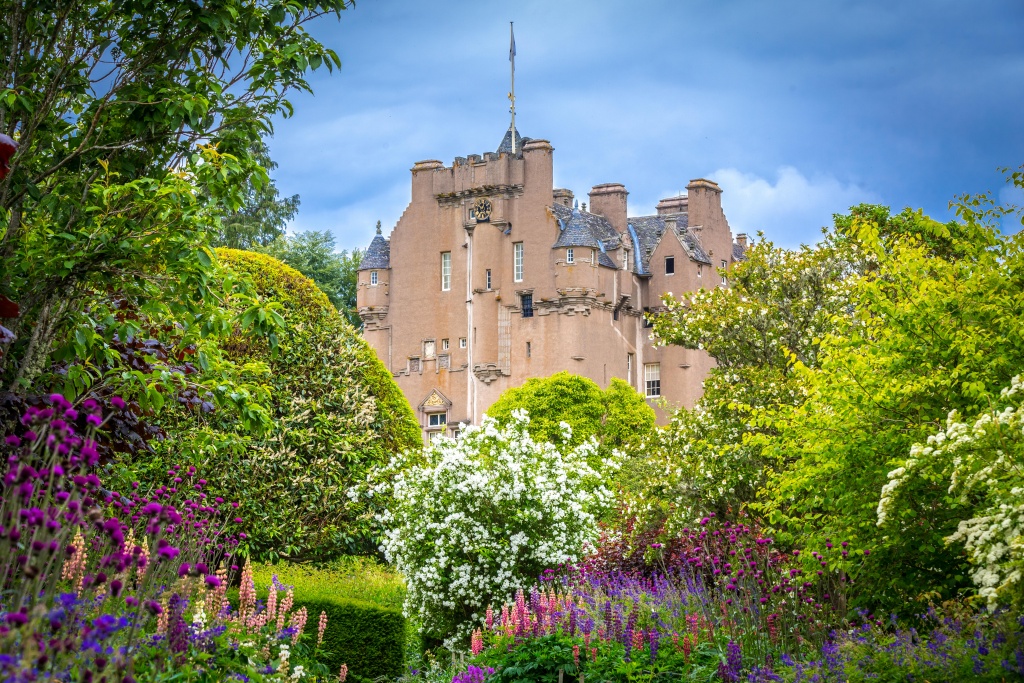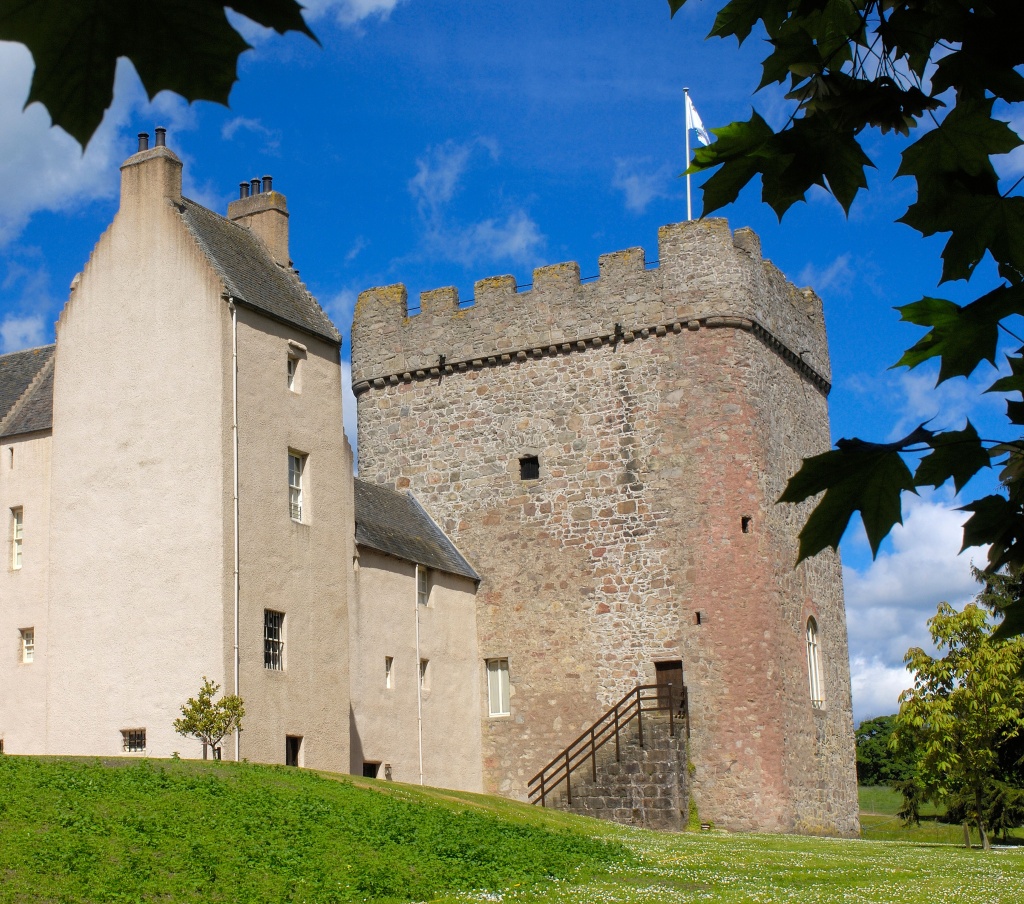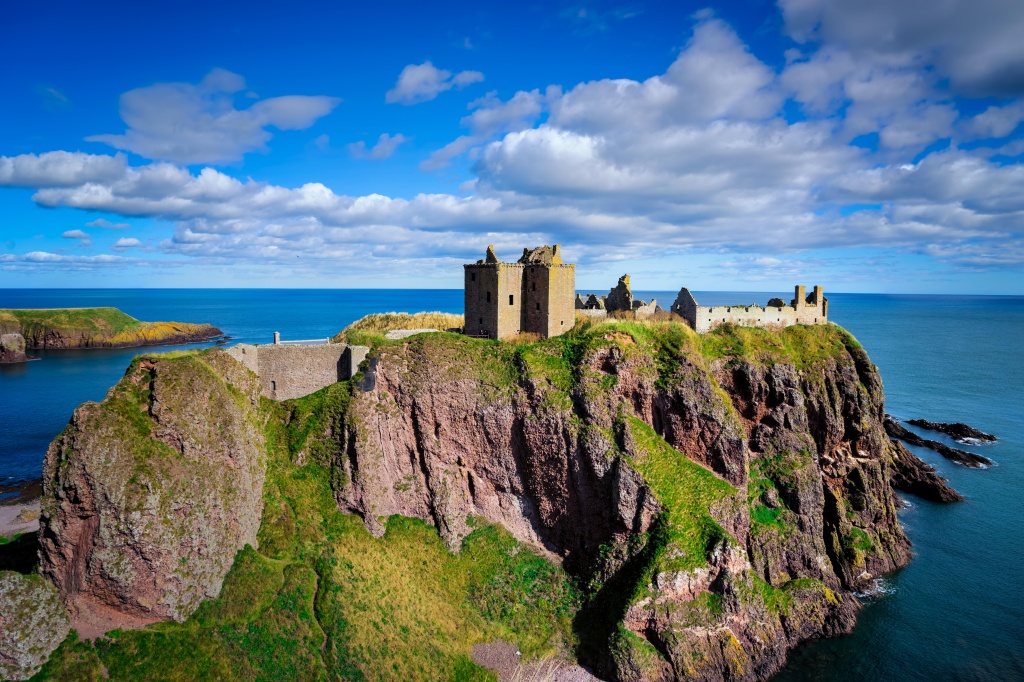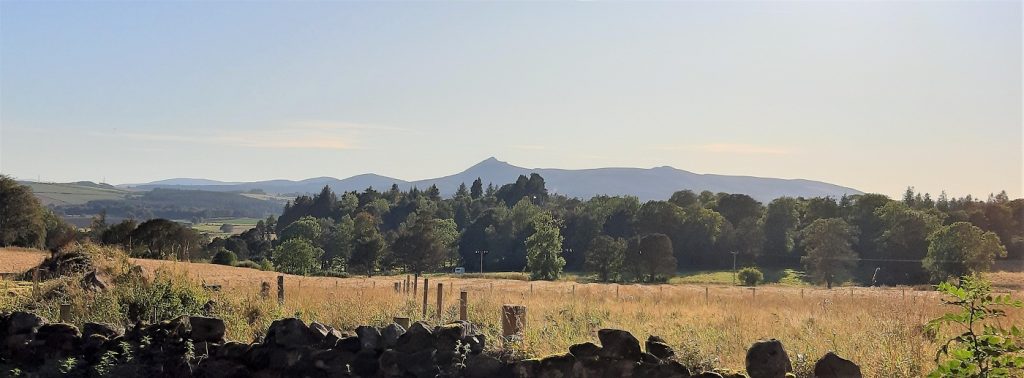Driving through the wonderful scenery of mid Deeside we’ll visit some fascinating locations that tell the story of the evolution of the Scottish castle – from wooden and stone ‘keeps’, to sprawling courtyard castle, to residential tower house and baronial country residence. We’ll set the scene with a stone circle dating from the earlier peaceful Bronze Age and an Iron Age hill fort, the ‘castle’ of earlier ages. Along the way, we also peek into the real Macbeth’s life and death, look at the turbulent and complex history of the dramatic Dunnattor Castle and admire the beautifully restored and iconic Drum and Crathes Castles.
Itinerary
We’ll start the day at the Bronze Age Tomnaverie stone circle, built in an apparently peaceful era when sacred ritual monuments dotted a landscape in which defensive structures were notably absent. We’ll then travel to a viewpoint to see the dramatic Mither Tap Iron Age Hillfort on the Bennachie ridge and ponder why this all changed!
Travelling onto the Peel Ring of Lumphanan, we’ll see one of the best examples of a 13th century castle mound that supported an early wooden castle built by the Anglo-Normans. From here, we can see the cairn at which (the real) Macbeth was reputedly killed in 1057 fighting Malcolm Canmore, and learn a little about this much, wrongly, vilified king – Shakespeare has a lot to answer for!
At our next stop, Drum Castle, the magnificent 13th century stone ‘keep’ sits proudly alongside the Jacobean and Victorian mansion as a survivor of the later age of tower houses, in which the early stone towers were often pulled down or completely rebuilt. The thick tower walls harbour a recently discovered secret room, where it is thought Alexander Irvine, the 17th Laird of Drum and Jacobite supporter, hid to avoid capture after the Battle of Culloden!
Our next stop, the dramatic and atmospheric coastal cliff-top Dunnottar Castle, is a castle on a different scale. Here, a sizeable number of people could be protected within the ramparts of the sprawling courtyard, made even more impenetrable by steep cliffs on all sides. A stronghold for many centuries of the powerful Marischals of Keith, Dunnottar’s superb defensive position meant it had great strategic importance, which is reflected in its turbulent history. As we explore the array of buildings on the site, including the Mediaeval Chapel, the 14th century keep and 16th century palace and lion pit, we’ll find out how the site changed hands several times between Scots and English, hid the Scottish Crown Jewels from Oliver Cromwell’s army and imprisoned dissenting Covenantors, before falling into ruin after the fateful decision by the 10th Earl Marischal to join the Jacobite cause.
In contrast, our final destination is Crathes Castle, an elegant and iconic tower house, surrounded by beautiful and peaceful gardens. Built in the 16th century to replace an early ‘crannog’ castle located on an island in a nearby lochan, the building speaks more of comfort and luxury than defence, which had become secondary. Famous for its colourful Scottish Renaissance painted ceilings and ancient topiary yew hedges in the adjacent walled garden, the castle is the seat of the Burnett of Leys who, with the Irvines of Drum, were the Keepers of the Royal Forest of Drum. After touring the castle, we finish the day with a visit to the gardens to enjoy a heady mix of colour and scents.
Visits to: Tomnaverie Stone Circle; Mither Tap Iron Age Hill Fort (view from roadside viewpoint); Peel Ring of Lumphanan; Drum Castle (view from outside); Dunnattor Castle; Crathes Castle and Gardens




